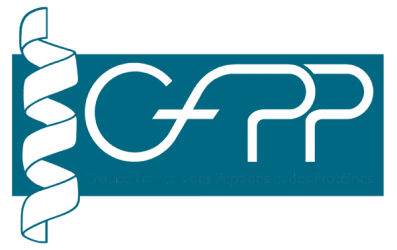
Short fiber-forming peptides were modified by histidine substitution and mannose or galactose attachment and combined with different metal ions. Although no generalizable trends were observed, Lys to His substitution at position 25 with galactose in the presence of copper produced a species with highly favorable viscoelastic properties.
ABSTRACT
Mucus is the biological hydrogel that lines the mucosal surfaces of mammals and acts as a protective barrier. Its main proteinaceous component is mucin, the high molecular weight, degree of glycosylation, and hardly uniquely defined nature of which hamper precise structures/property investigations based on biological samples. In contrast, chemically precisely defined peptide model systems inspired by such natural glycoproteins represent synthetically readily obtainable tools with excellent properties for both fundamental research and biomedical applications. Herein, we report the design and characterization of a library of histidine- and monosaccharide-containing coiled coil peptides that form hydrogels to different degrees in the presence of divalent metal ions Cu2+, Zn2+, Ca2+, and Fe2+. Using rheology, circular dichroism, and transmission electron microscopy, we determined the viscoelastic properties and global structures of these glycopeptide materials. This study reflects the interplay between glycan identity, histidine position, and divalent metal ion on the mechanical strength of these hydrogels.


